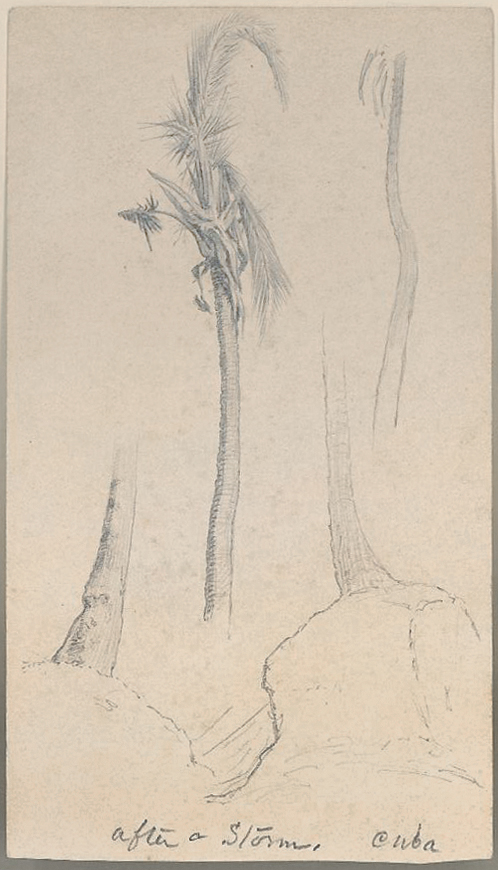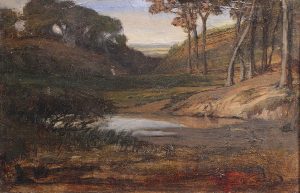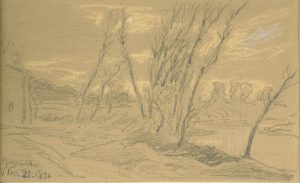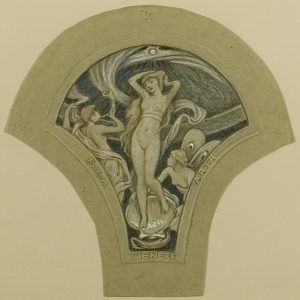Elihu Vedder (1836-1923)
Illustrator, figure painter, and mural painter Elihu Vedder was born in New York City in 1836, but spent much of his childhood in Schenectady, New York. He began to study art at age twelve and later studied with T. H. Matteson in Sherburne, New York.
Vedder was strongly drawn to Europe and the Mediterranean, and traveled there often. He went to France in 1856, studying with Picot in Paris, and then to Italy where he studied with R. Bonaiuti in Florence. He returned to the United States in 1861. He spent the war years in New York City, but went abroad again in 1865, this time to settle permanently in Italy. Although he frequently visited America, Vedder considered Rome to be his home, and he summered on the Isle of Capri. He became most well-known for his illustrations for “The Rubaiyat of Omar Khayyam” (1884). Vedder was, however, primarily, a visionary painter of allegorical and mythical themes, infused with a mystical, haunting imagery. In his later years he also painted a number of large murals and authored several books. He died in Rome in 1923.
Vedder exhibited his work at the Brooklyn Art Association, the Venice Biennale, the National Academy of Design, the Boston Art Club, the Pennsylvania Academy of the Fine Arts, the 1889 Paris Exposition, the Pan-American Exposition in Buffalo, and the Corcoran Gallery. His work is held in many collections, including the Metropolitan Museum of Art, Bowdoin College, the Boston Museum of Fine Arts, the Rhode Island School of Design, the Corcoran Gallery, the San Francisco Museum of Art, and the Hudson River Museum.
Trees After a Storm, Cuba
by Elihu Vedder (1836-1923)
| Medium | Drawing |
| Medium Detail | Pencil on paper |
| Dimensions | 5 5/8 x 8 inches (sight size) |
| Signed Location | Inscribed with title, lower center |
1 in stock
Contact Us About This Piece




